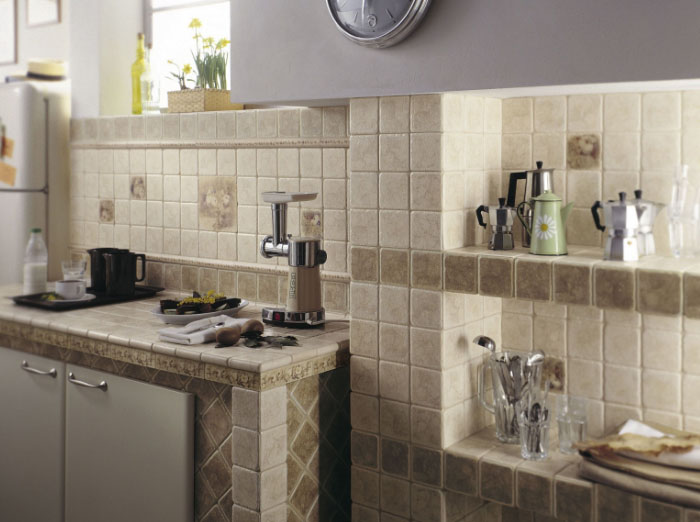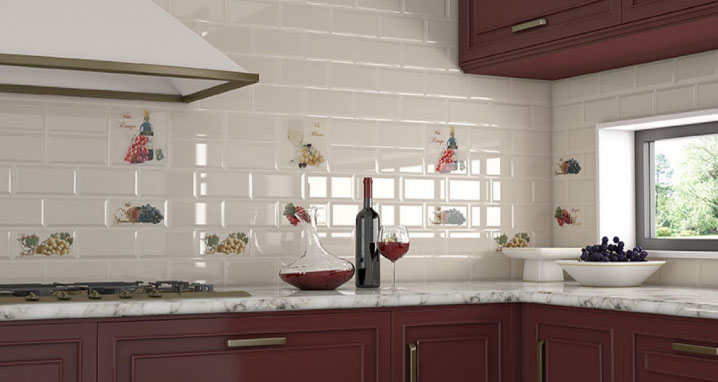Apron kitchen tiles: from the decor to the laying
Kitchen equipment (gas or electric stove, wash, food processor and other) try to locate in close proximity to each other, within arm's reach, because no one wants to rush the process of cooking in the kitchen from end to end. Accordingly worktop kitchen unit is also located along one wall or in a corner. Such an option arrangement of furniture and equipment allows for the preparation of products (the washing up, porezku, crush), cooking and washing dishes almost in one place, without making unnecessary movements in the kitchen.
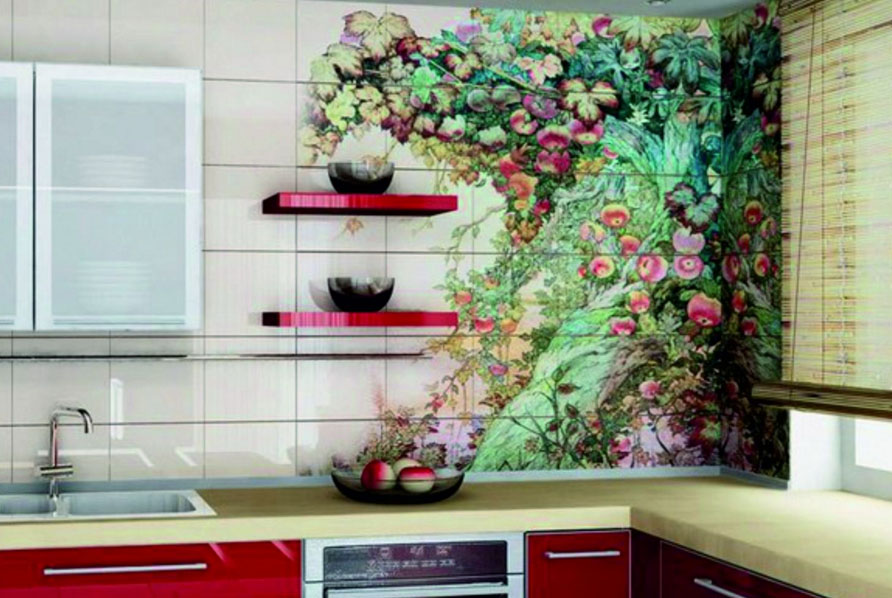
During the cooking and washing up will inevitably hit fat splashes, drops of water and other types of pollution not only on the work surface, but also on the walls. Furthermore portion near the plate amenable to high temperatures and steam. therefore the decorative coating above the work surface have special requirements.
What makes a kitchen apron

materials, used for the manufacture of kitchen apron, You should have the following combination of characteristics:
- Resistance to high temperatures.
- Humidity resistance.
- Resistance to fading when exposed to ultraviolet rays.
- The ability not to absorb grease and odors.
- It is easy to clean.
Ceramic tiles and other materials
These characteristics has a different extent list finishing materials:
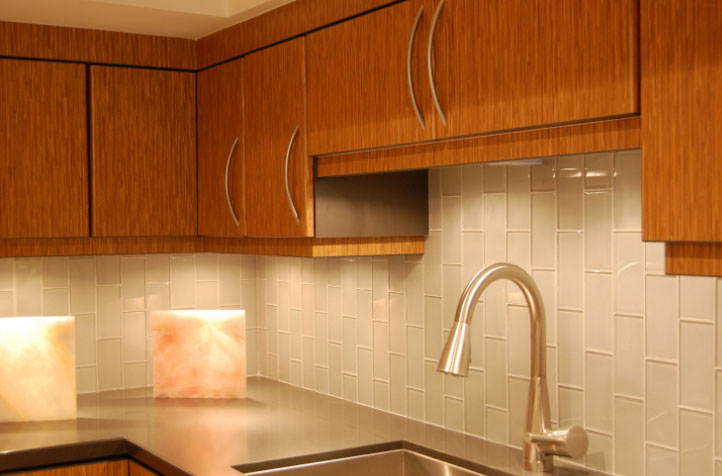
- color, mirror or clear glass. The main advantage of glass is the ability to create any apron design for the kitchen, using, including, the wallpaper or the fabric and cover it with a protective layer of transparent material. The main disadvantage is the brittleness of glass, difficulty in removing grease stains and divorces, as well as the complexity of installation and high cost.
- marble, granite or other stone. Stylish, practical, but expensive option finish.
- MDF. easy to install, They are inexpensive and have a great selection of colors, but that's where the benefits end. Resistant to moisture, temperature changes and other effects of this material rather mediocre, whereby the sheet is deformed with time. Besides, MDF is a combustible material and may not be installed in close proximity to the hot surfaces.
![a work area for the kitchen tiles]()
- Stainless steel looks perfectly in the interior, Decorated in the style of hi-tech, however it requires specific care and subject to scratching.
- plastic is cheap and it looks good at first. Exposure to physical damage (Scratch and schools), low strength, burnout and deformation under the influence of temperature is not a complete list of this material deficiencies, why plastic is used mainly for decoration levels of "economy".
- Kitchen Tiles mosaic or combine practicality, durability, reasonable price and beautiful appearance, which explains the popularity of these materials. Furthermore tiling possible on their own, that allows you to save on payment for work.
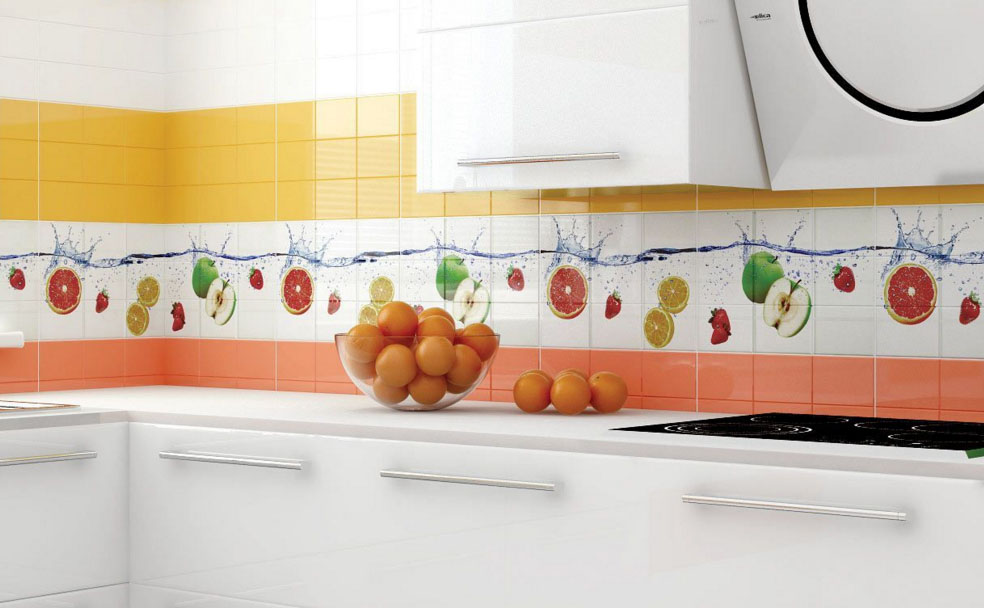
The shape and design of the apron
In addition to high performance, ceramic tile different forms of wealth of choice, sizes and colors. Also in the kitchen tiles laid in different ways, You can combine colors and types, that allows you to design a kitchen apron of tile unique.
The standard form of tile manufacture - square the side of 10, 16, 20, 25 or 30 cm, and the rectangle different length sides. The surface is matt, glossy or rough or mimics the structure of natural materials (stone, brick, wood, bamboo and other). Popular rectangular, with beveled edges, Tiles on the pylon kitchen apron.
Choose products with a rough or structured surface for laying the apron is not recommended. Despite the interesting tile design, from a practical point of view of its operation is not profitable, since irregularities quickly soiled fat, dirt and dust and is difficult to clean. Excessively small tiles are also difficult to install and care.
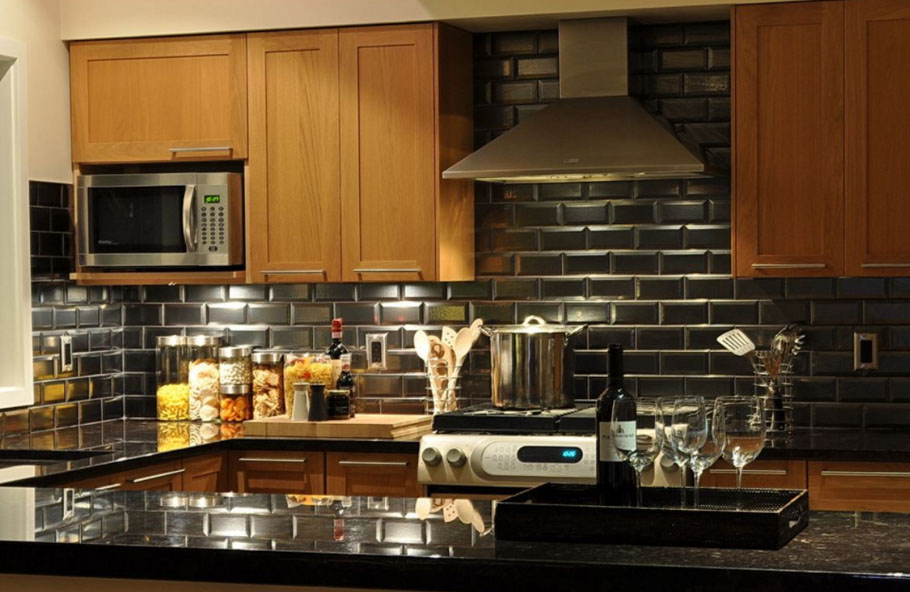
The color and design of tiles in the kitchen is chosen based on the tastes of the owner and may or may contrast with other interior elements (ceramic tile in black, combined with a light kitchen), and in harmony with the individual elements of the environment or with common color solution, If the kitchen is designed in various shades of one color. apron design for the kitchen tiles depends on, what options tiling used. Distributed the following methods:
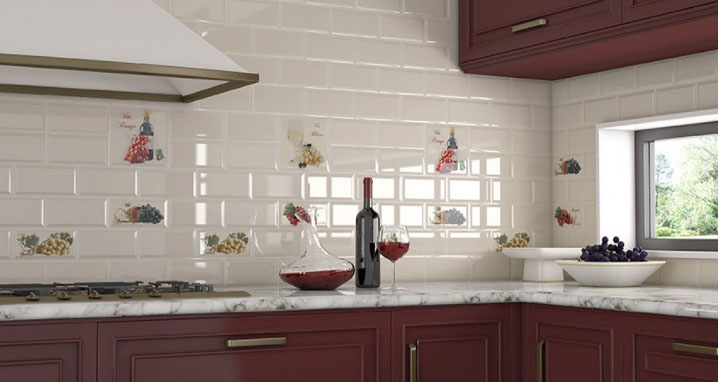
- The classic way is universal and involves laying flat, horizontal and vertical rows of straight stitches. Suitable for concise, strict design, eg, If countertop and apron of one color, and other variants of interior design. It emphasizes the straight lines and give the interior elegance with black and white tile grout.
- Laying diagonally at 45 ° popular, easy to perform and can be framed tiles, laid in the classical way. The only drawback is the need for circumcision tiles.
- Laying tiles pylon. Ceramic tiles hog imitates the brickwork, or simply has convex rectangular elements. Applicable tiles for kitchen hog on an apron, configured in various styles: Scandinavian, loft (white tile pylon in combination with black seams), industrial, country and other. Price hog tiles depends on the country and the brand manufacturer, but slightly higher, than standard square or rectangular products of the same quality.
- Laying the tiles in the Extension is made of rectangular elements and resembles a brick wall offset, when the seam between the bricks is exactly above the center of the brick from the bottom row.
- Stacking "herringbone" is made of rectangular tiles, The same method is used when laying parquet.
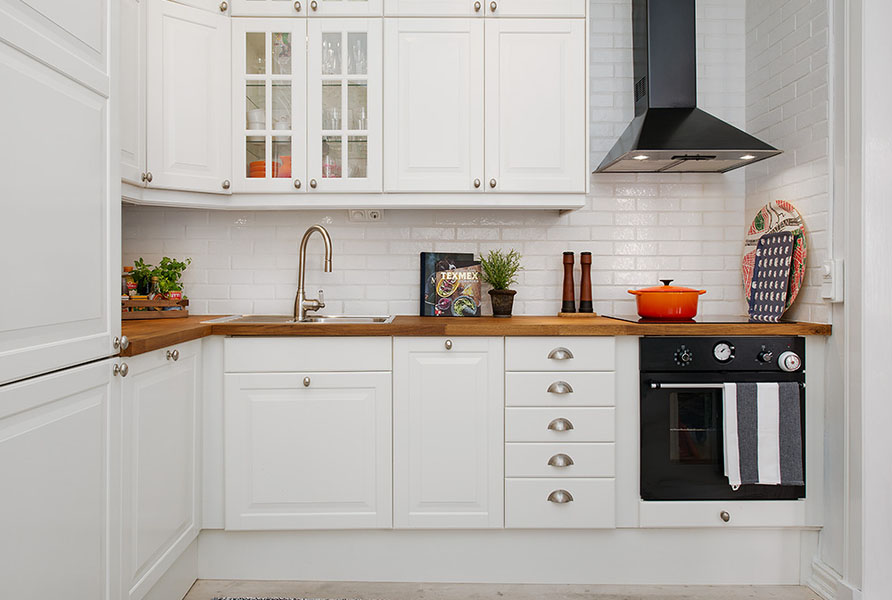
Do not be afraid to combine different modes of presentation. So, tile hog interesting looks framed by a dark border, the classical method at several locations can be placed with the insertion of printed pattern and so on. Generally, tiles provides the opportunity to fully demonstrate the talents of designer and create an original apron to your liking.
Laying the tiles with their hands from "A" to "Z"
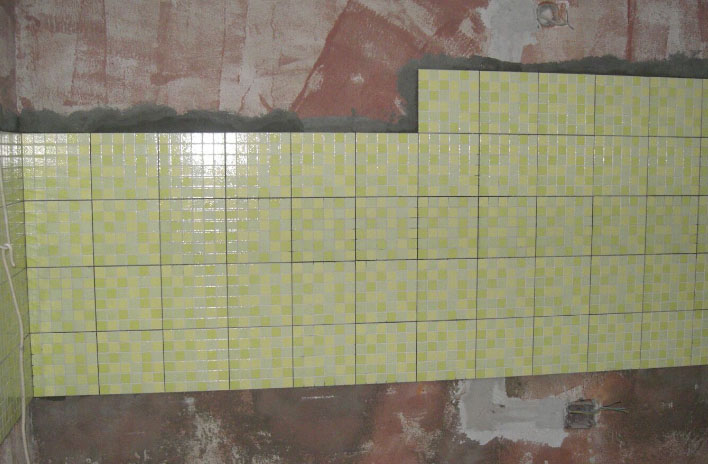
Laying process is not so complicated, as it seems at first glance, but begins to master it is better to choose the easy way, eg, classical. The works are divided into several stages:
- The marking of walls and prepare the right amount of materials.
- surface preparation. Fit for the kitchen tile on the walls smooth, without bumps or hollows. All cracks and openings sealed with putty, floated using plaster and applied to the primer layer. Laying can begin only after complete drying of the primer.
- actually styling. Along the lower edge of the markup set metal profile Tile, preventing its sliding under its own weight in the process of hardening the adhesive. Laying begin with the lower right corner. The novice master is better not to risk it and do not cook their own glue from a dry blend, and buy a ready-to-use composition. One-component acrylic composition provides good traction with the surface, prevents slipping, is applied only to one surface and economically spent (an average of one kilogram enough for laying tiles per square meter). The composition is applied to the back of the tile with a notched trowel, spread evenly over the surface. Excess glue as undesirable, as well as its small amount. To comply with seams of equal width need to use plastic crosses.
![klassicheskij-fartuk-iz-plitki-na-kuxne]()
- Grouting. Immediately after the laying of the seams carefully remove remnants of adhesive. After complete hardening of the adhesive composition (time depends on the applied adhesive) tic removed from the joints and start grout. Grout is applied with a rubber trowel. After completion of works the remains of grout wiped with a soft lint-free cloth.
Make a beautiful kitchen!

